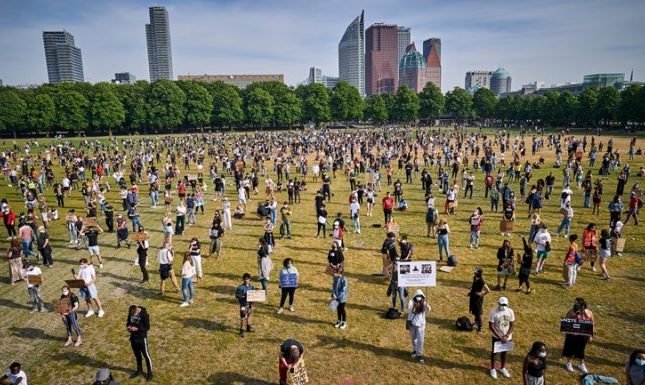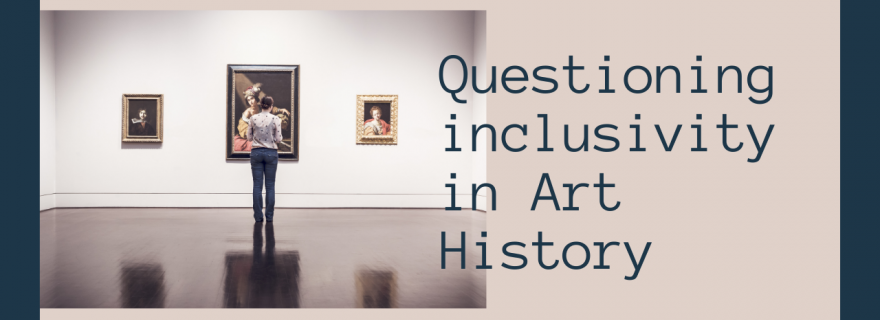Blindspots in the White Cube
At the end of the academic year 19/20 a group of students gathered to write a letter to the university. In this blog you will read how this went about.
In the weeks after the death of George Floyd and the subsequent global Black Lives Matter-protests (BLM from now on) we, a group of Art History/Arts, Media and Society students sent a letter to the board of our studies in which we expressed our dissatisfaction with the state of affairs at the university. The main point of the letter was that our education in our department focusses mainly on Western-centered topics. This is not only prevalent at our university but in the whole discipline of Art History. Most of the art we have to analyze and research in our studies are produced by white, western men, and the same goes for the majority of the scholarly literature. This causes a vicious circle in the canon of art and academic education that results in some voices being unrepresented or not heard at all.
Although this dissatisfaction had been prevalent for some time, the flare-up of the BLM-movement was our call to finally speak up about this and voice our concerns about how art, and the varying context in which it plays a part, can be made more inclusive and diverse. Evidently, it can be quite uncomfortable to criticize the institution you are part of, but we realized confronting systemic racism and demanding change is never going to be easy.

Whereas the racism in America may be more visible and life-threatening, in the Netherlands it is primarily evident in institutional racism, where Black People and People of Colour (BPOC from now on) suffer from prejudices and unfair legal, economic and socio-cultural disadvantages entrenched at a systemic level that are built upon years of colonization and white supremacist thinking (the idea that one ethnic group is superior to another). It’s obvious that the academic world is very white. Considering the narratives constructed at the university and the lack of BPOC being represented, it is not a surprise that mainly white students enroll in studies like Art History.
How might we go about bringing onboard new perspectives that challenge the dominant discourses that position white men at the center and everything does not meet the status-quo as secondary? We think first and foremost we should take a critical look at education and crucially, representation. The group of people and the lives that we see depicted in museums, art galleries, and read about in canonical survey texts (whose titles always claim to tell the story of art) reflect back to the society we are part of. By actively under-representing certain demographics, you essentially reduce their role in the story of art and diminish their overall contribution to society. This is part of a wider politics of narrative, and now the time has come for the white cube to make room for other perspectives.
The White Cube referred to in the title of this article symbolizes existing ideas about the canon, the museum, and the university. Art historians, curators, and other professionals in the field should be concerned about the current state of affairs because they have an influence on how museum displays are arranged and what sort of knowledge is being produced and consumed. Museums are sites of collective memory and public engagement and therefore have a responsibility to consider how they can contribute to dismantling inequality in our communities. It should be a place where one feels connected to the history and stories that are being told. A museum for you and not only about you.

To our surprise, the letter we sent was received positively. All the professors were open to hear about the students’ experiences and concerns, and a digital meeting with professors and students was planned. We reflect back on it as a productive conversation in which professors shared how they want to diversifying their curriculum. Many were open to feedback from students concerning possible ways to acknowledge, and thus question, the Eurocentrism of the content. But what will actually change in result of our letter, we can only conclude after some time has passed. In October there will be a moment of evaluation with students and professors to review the state of affairs. This experience has shown us that speaking up about the things you truly care about is important and necessary. It is crucial to pursue dialogue within the academic world, because only by doing so, we can bring about real change.
Sabine Verbree is a third-year Art History student at Universiteit Leiden. This year she fulfills the position of the President of the 53rd board of de L.K.V. (study association for art-related studies at Leiden University). Her primary interests are museology and the origin of collections. Besides her studies, Sabine is currently pursuing an internship at the Venduehuis The Hague in the paintings department.


0 Comments